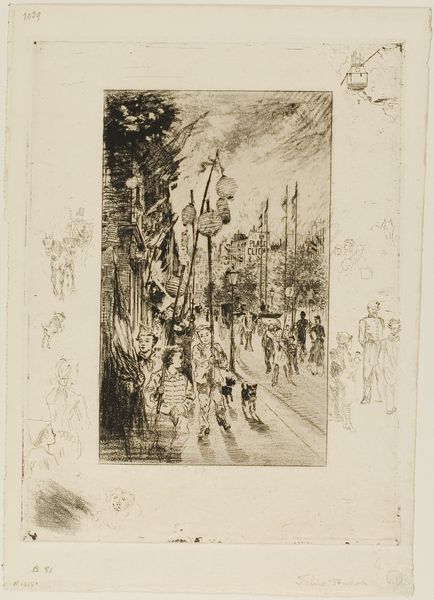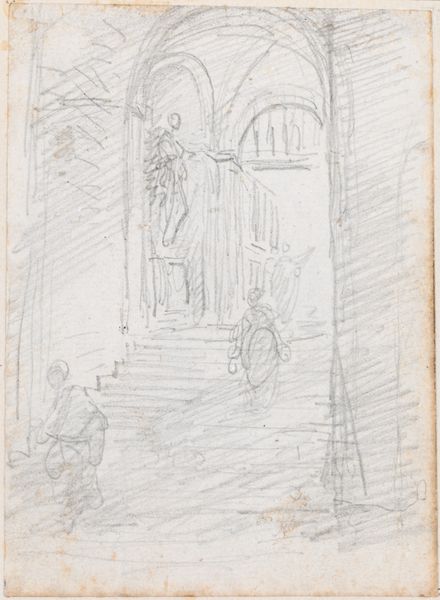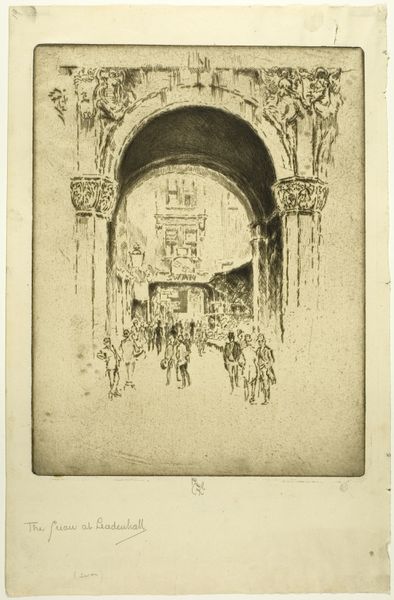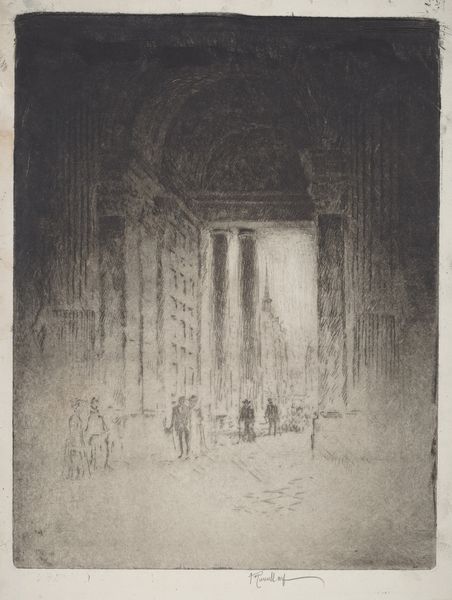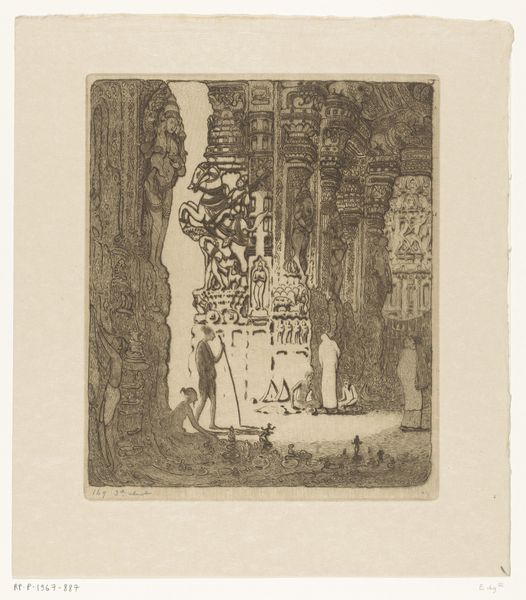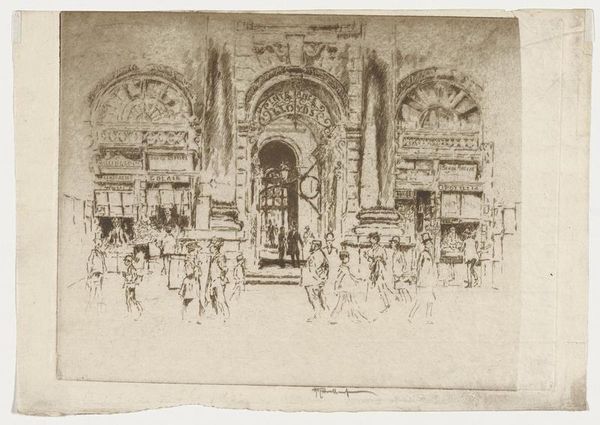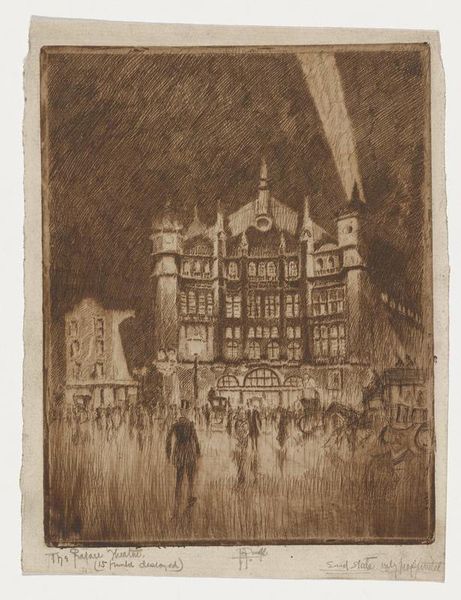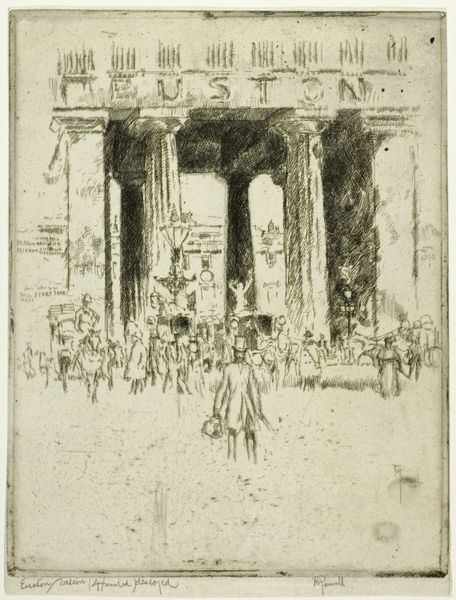
drawing, print, etching
#
drawing
# print
#
impressionism
#
etching
#
cityscape
Dimensions: 9 3/8 x 4 7/8 in. (23.81 x 12.38 cm) (plate)12 1/8 x 8 1/8 in. (30.8 x 20.64 cm) (sheet)
Copyright: No Copyright - United States
Editor: This etching by Joseph Pennell, titled "Avenue Theater," from 1886, gives such a striking impression of late 19th-century city life. It's amazing how much atmosphere he conveys. What jumps out at you when you look at it? Curator: Well, I’m immediately struck by the romantic portrayal of urban modernity, a popular theme during this period. Consider how Pennell chooses to depict a theater. In 1886, theaters weren’t just places for entertainment; they were public spaces that reflected and shaped social values, weren’t they? Editor: Absolutely, almost like community hubs. Curator: Exactly! The blurred figures and the subtle glow from the streetlamps... it gives a sense of public life unfolding. Etchings like this were often reproduced and circulated widely, so they played a role in constructing a collective image of urban experience. Do you think the choice of printmaking has some implications? Editor: I guess because they could be reproduced en masse and become accessible to more people than, say, an original oil painting hanging in some rich collector's house. The printing process made the art public! Curator: Precisely. The work itself engages in the social conversation it depicts. The fact that Pennell made this an etching makes a very definite statement about the democratization of art, even then. So, what do you take away from thinking about this etching within the larger culture of the time? Editor: That context really changes how I see it. It is not just a pretty picture but a political statement about who art is for! Thanks for sharing those historical insights!
Comments
No comments
Be the first to comment and join the conversation on the ultimate creative platform.

